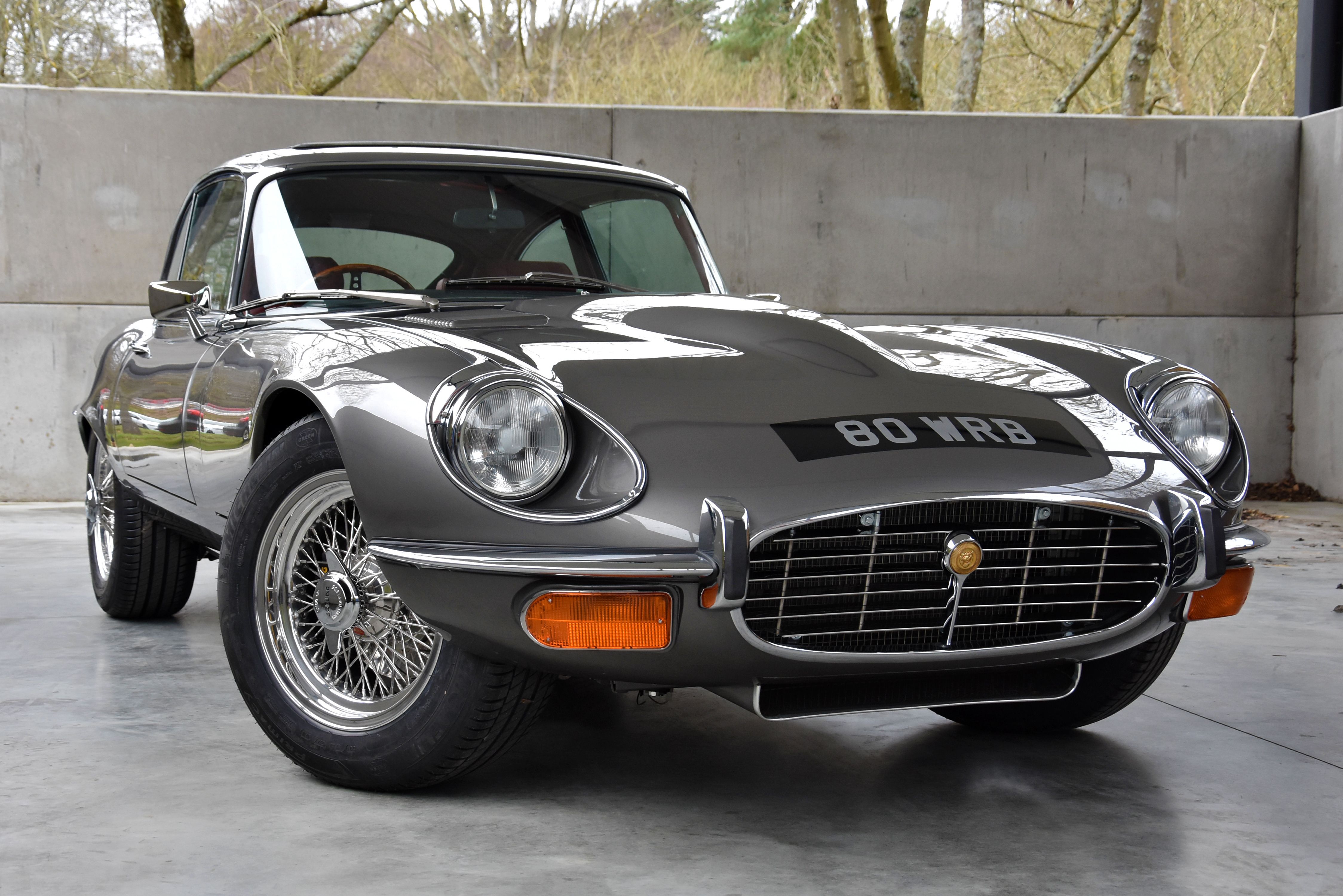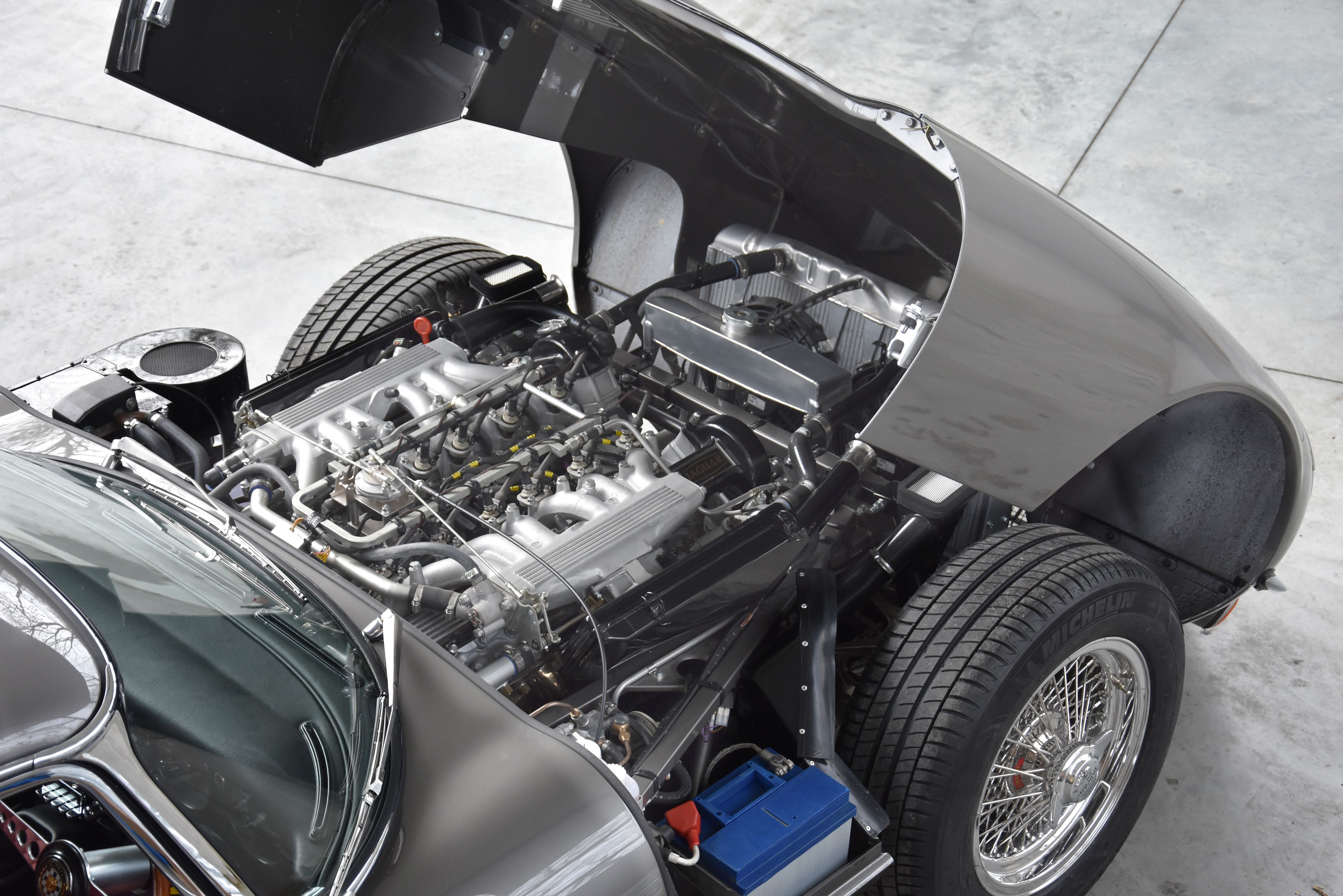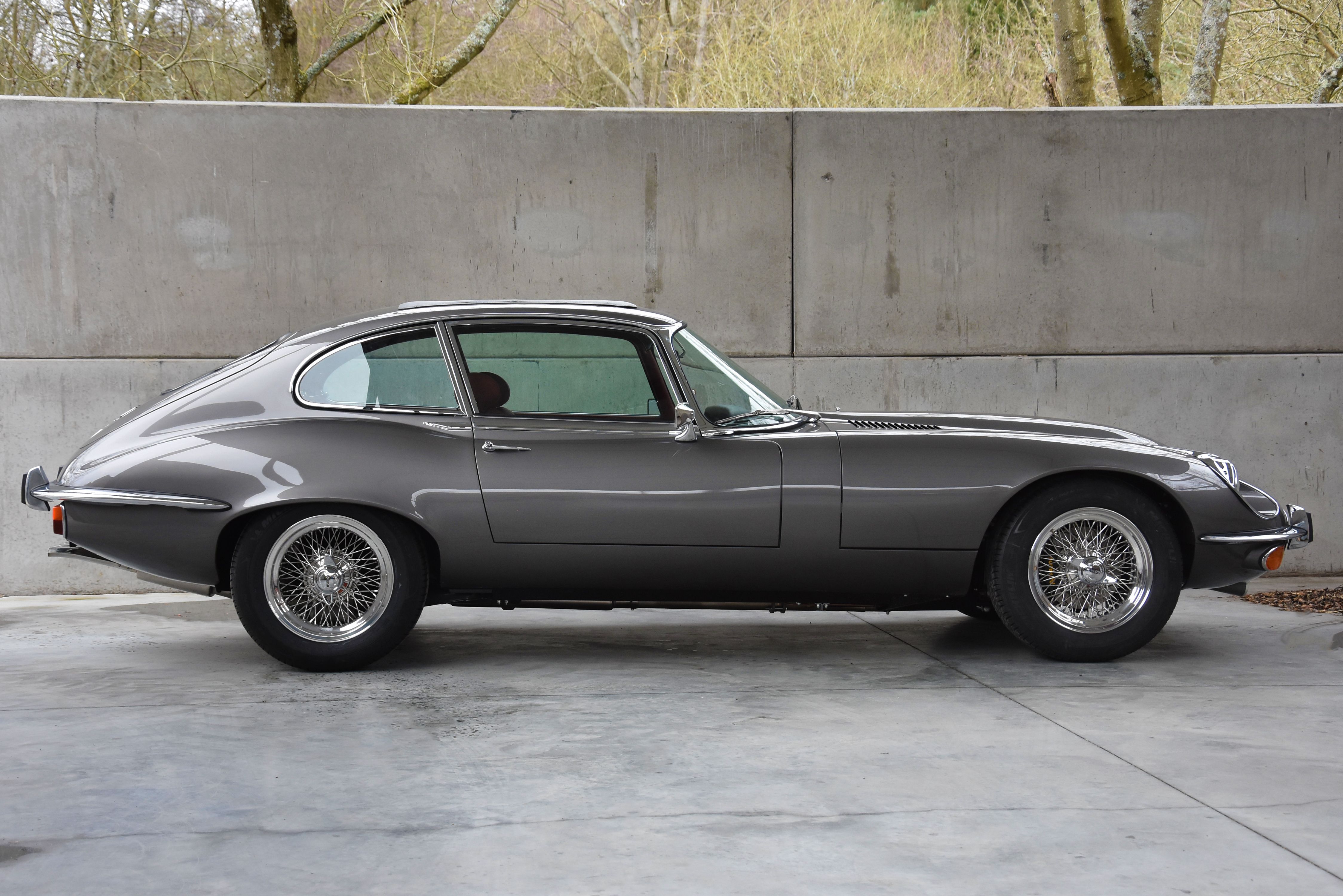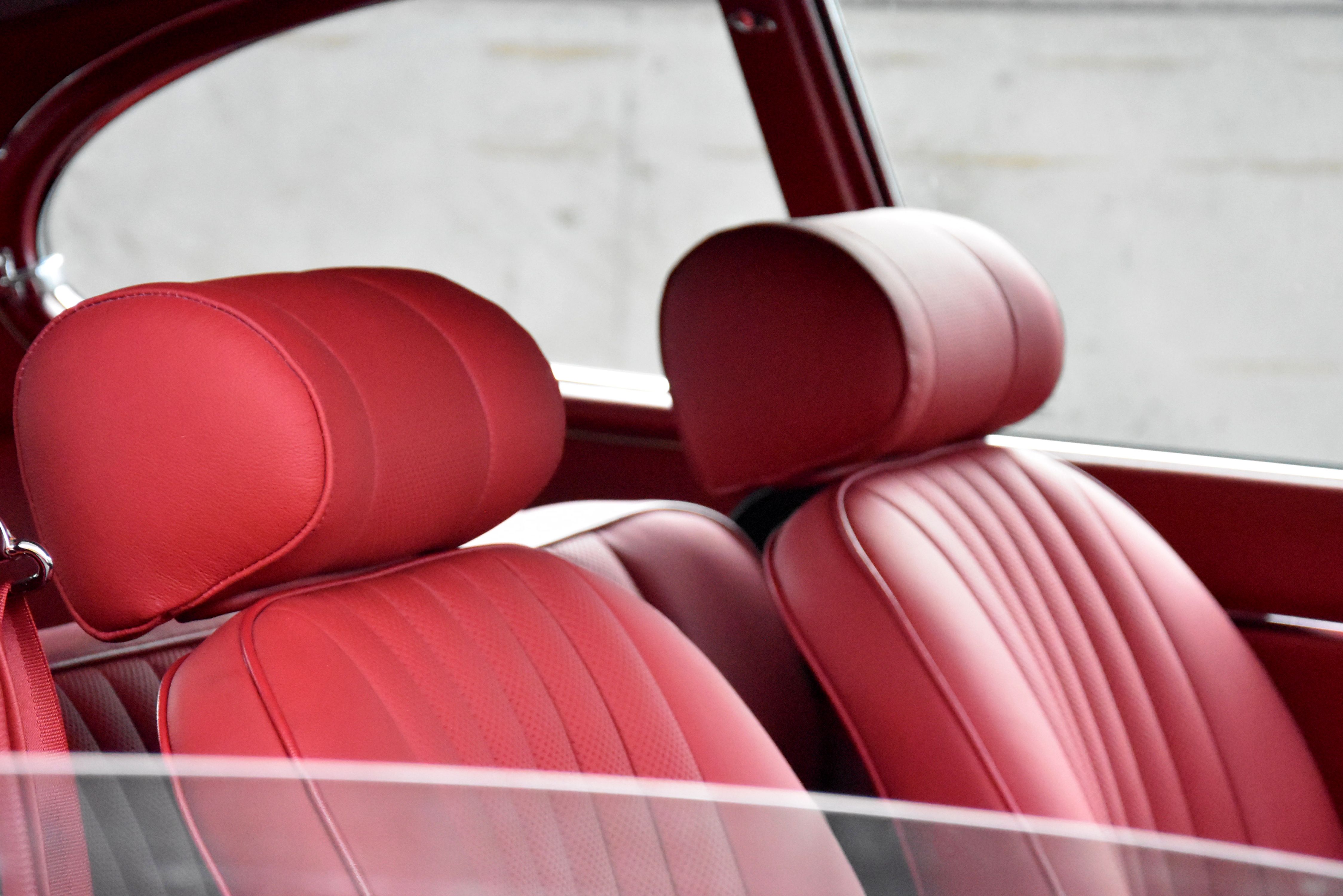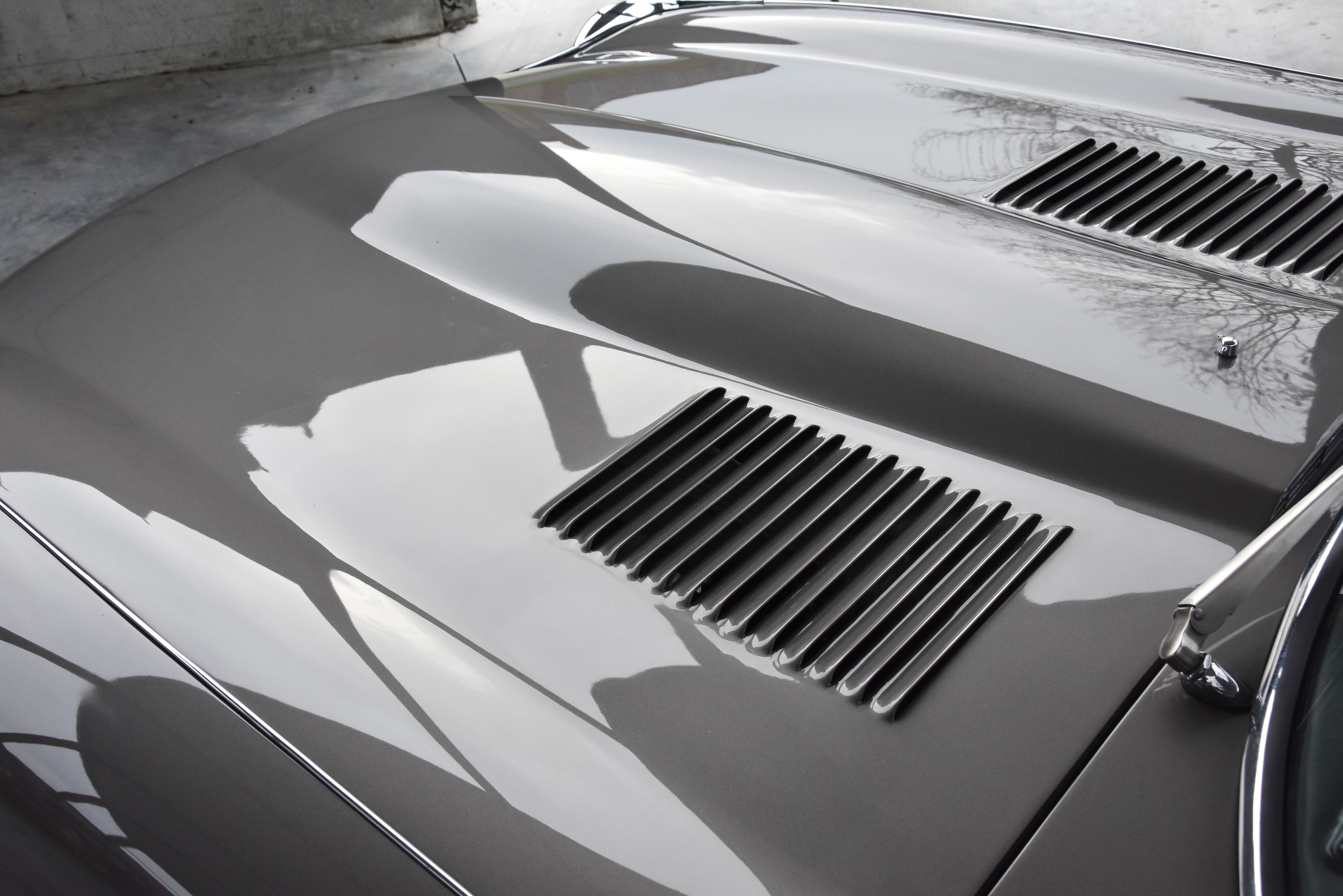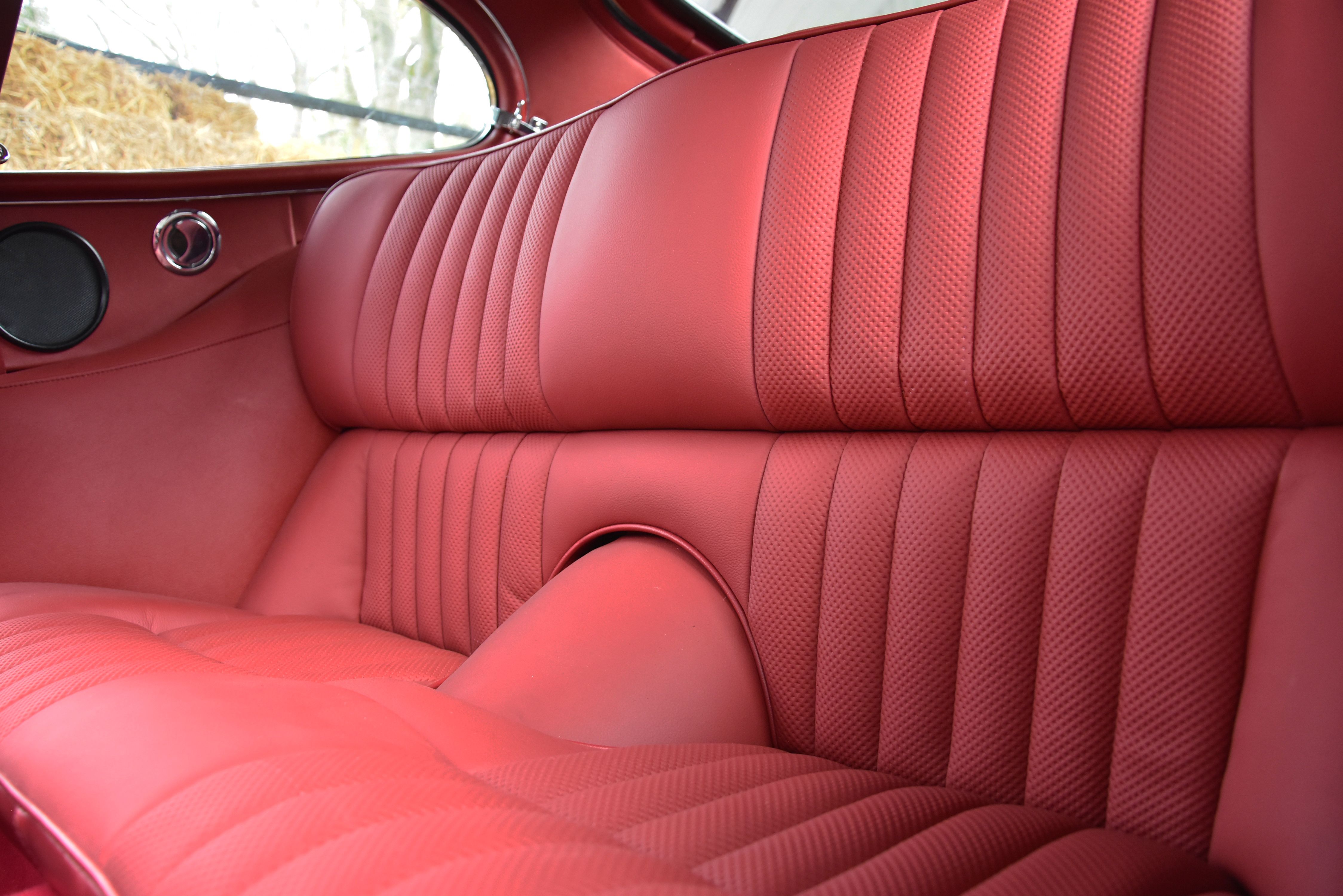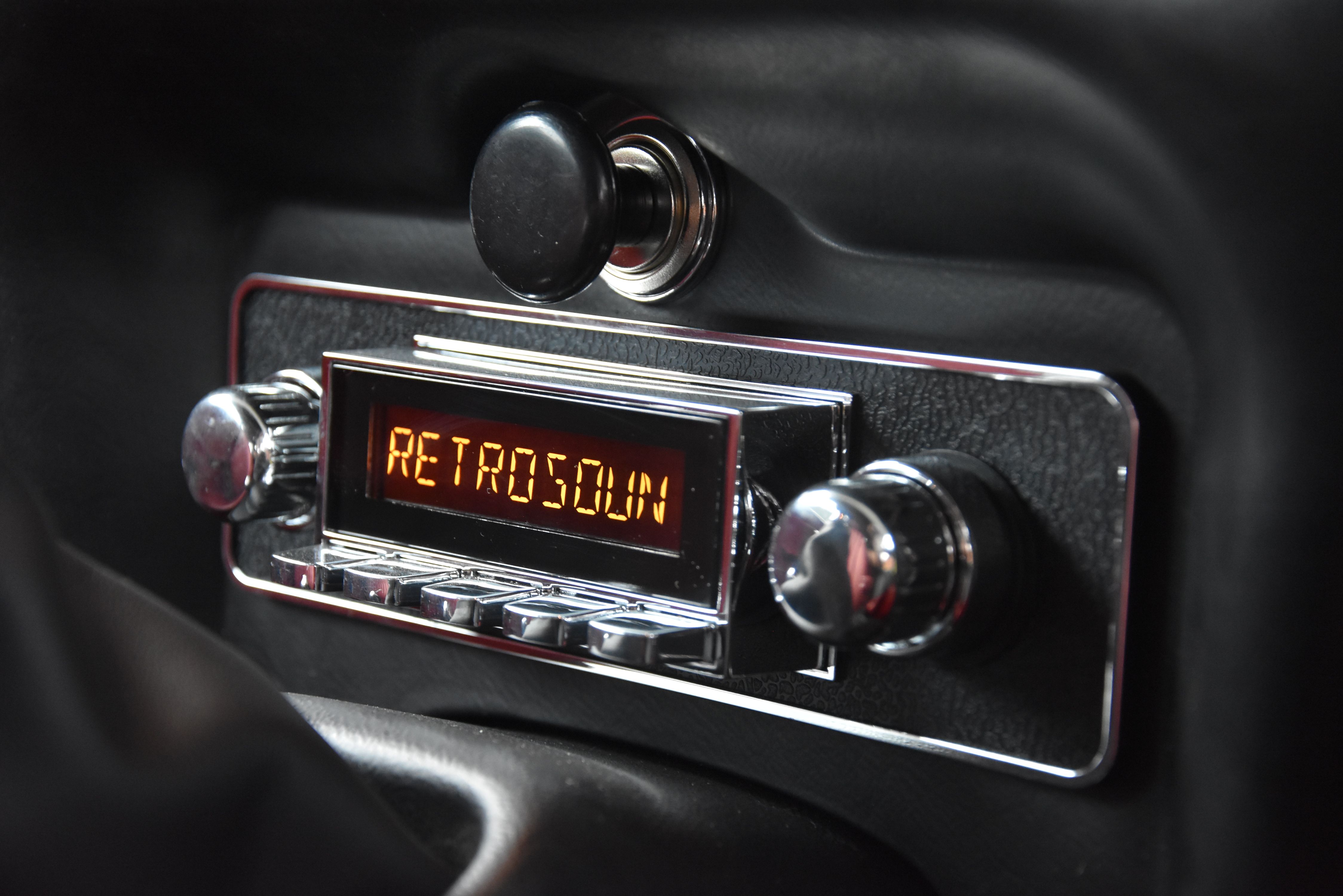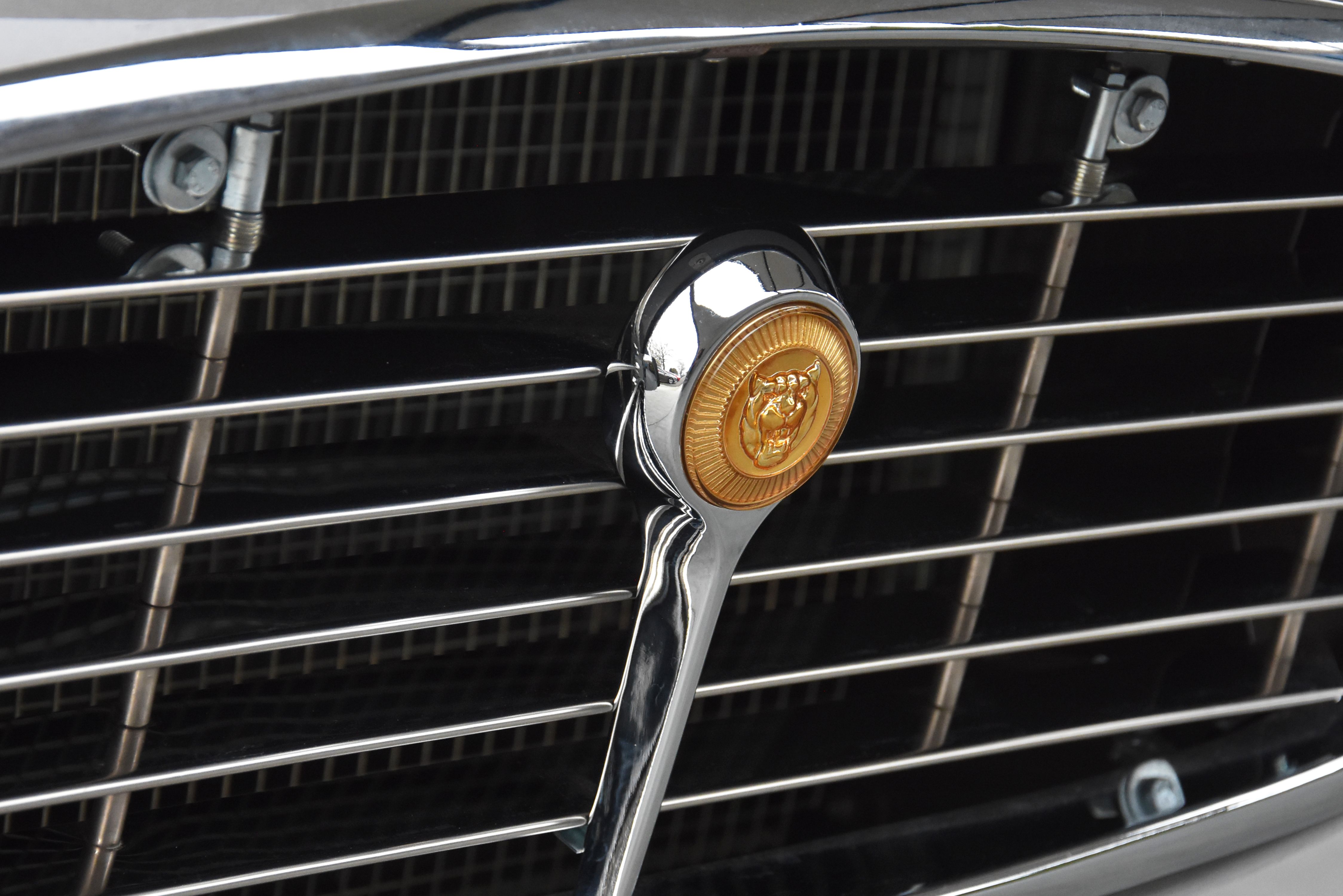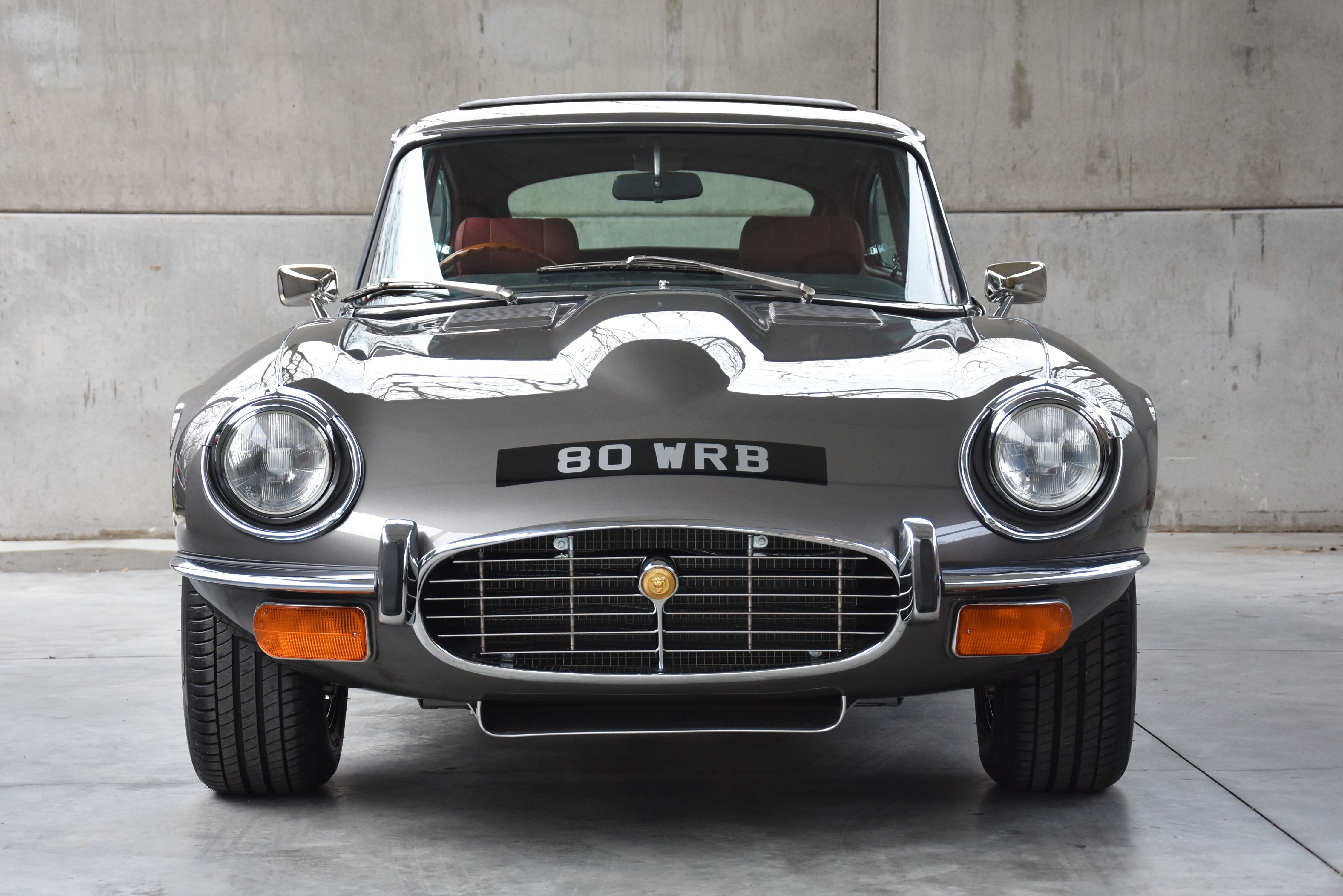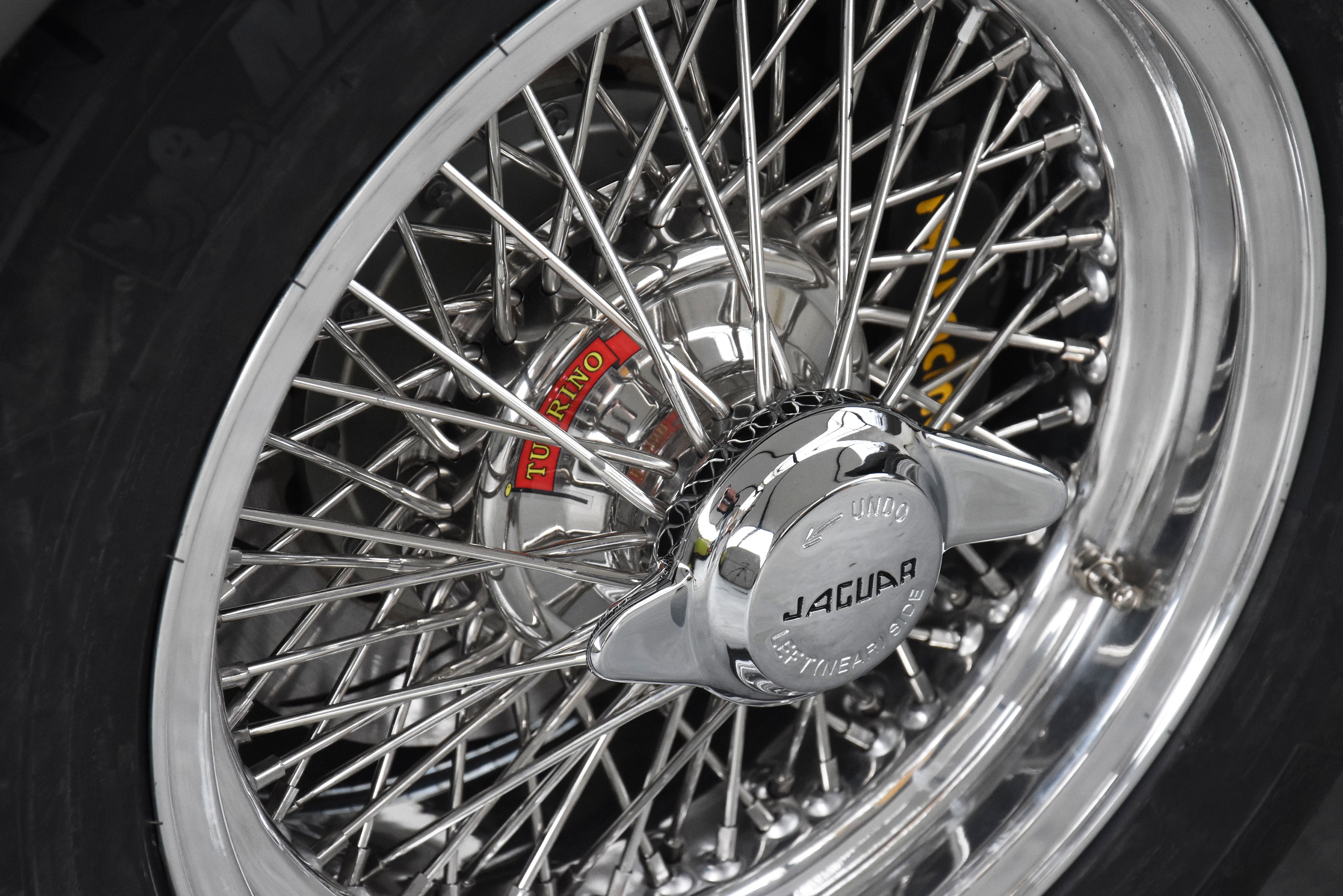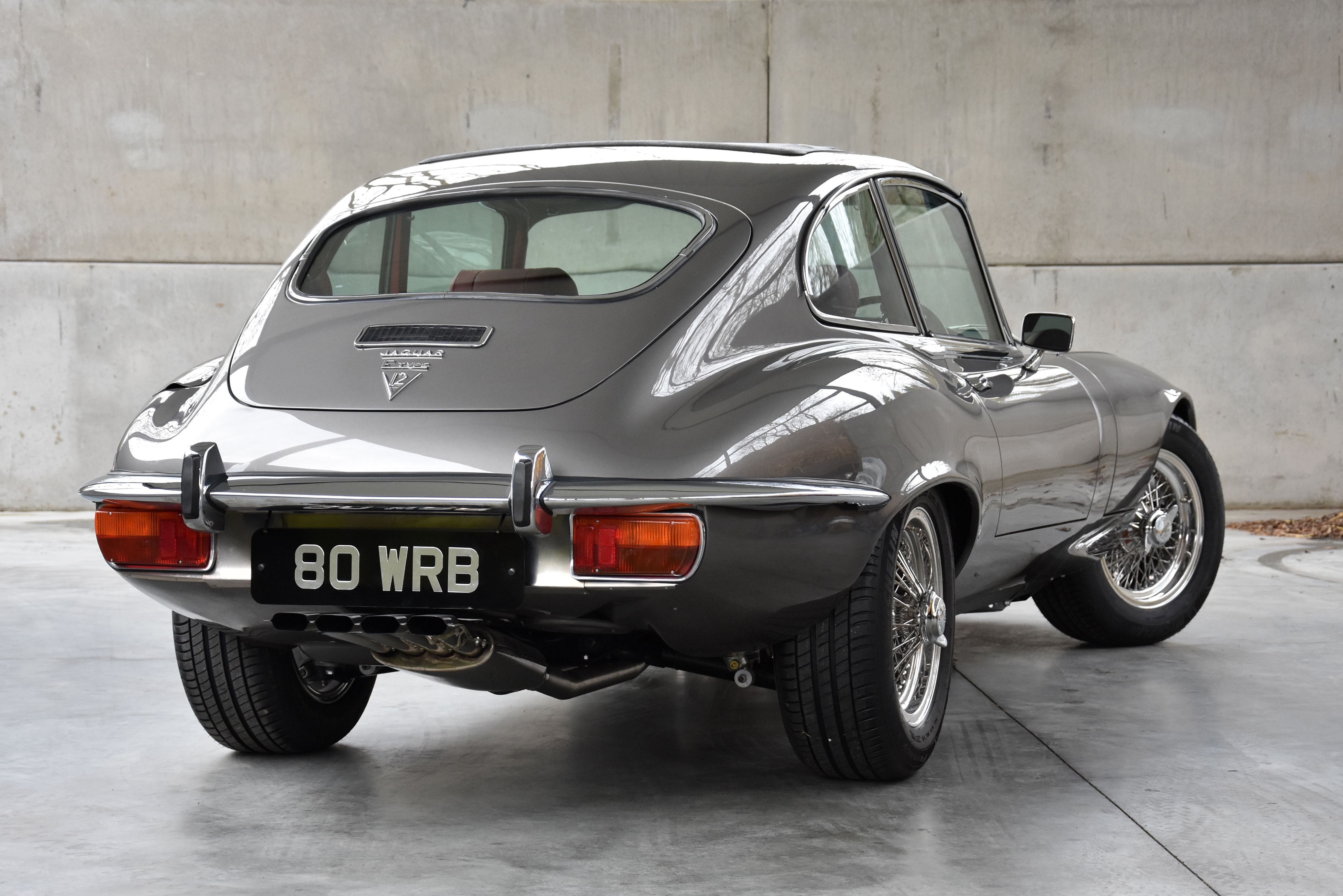The Jaguar E-Type Series 3 is the ugly duckling of the E-Type family as well as the swansong of the legendary car. It was produced between 1971 and 1975 and came with further body modifications that make it less desirable today than an early S1 example. The S3 you see here was restored and subtly upgraded by E-Type UK, one of the top Jaguar E-Type specialists in the world.
By the dawn of the '70s, the E-Type was very much like an aging rock star. It's past its best days but still soldiering on with the same party tricks that made it a hit when it first appeared on the scene. However, the 4.2-liter, inline-six, XK engine was finally showing its age thanks to a string of tougher emission regulations that gradually lowered the power output. Jaguar needed to perform a heart transplant on their legendary sports car and decided their best bet would be the V-12 engine that was originally designed for the XJ sedan. The result wasn't the much-hyped F-Type (as pundits at the time suggested the new Jag sports car would be called) but the E-Type S3.
1973 Jaguar E-Type Series 3 2+2
- Make: Array
- Model: 1973 Jaguar E-Type Series 3 2+2
- [do not use] Vehicle Model: Array
Jaguar E-Type Series 3 2+2 Exterior
The Jaguar E-Type is, by far and large, one of the most beautiful British cars ever made. Originally penned by Malcolm Sayer, the final touches were added by Jaguar Boss Sir William Lyons. The S1, or Series 1, debuted in March of 1961 at the Geneva Auto Show. Just like in 1948, when Jaguar debuted the XK engine under the luscious body of the XK120, the public's response was overwhelming to the point that Lyons rushed back to the U.K. to bring another E-Type to Geneva for people to see.
The E-Type was originally offered as a fixed-head coupe (FHC) or an open two-seater (OTS). Later, Jaguar was reminded by its customers that they were looking for a more spacious cabin in keeping with what Ferrari was offering with the 250 GT 2+2. As such, just as the XK120 morphed into the XK140 and then XK150, the E-Type also grew to accommodate rear seats where originally there was only a cargo shelf. The wheelbase grew by 9 inches from 96 to 105 inches and, to counter claims that the OTS had a cramped interior, this wheelbase was universal by the time the Series 3 was introduced in 1971.
To underline the change in the car's character, which I'll talk about in a bit, just about anything was covered in chrome in the front end of an S3 E-Type: the two-piece wraparound bumpers that end with crude vertical rubber over-riders mandated by new safety regulations, the frame that wraps around the recessed headlights, and even the oversized orange indicators attached to the aforementioned bumpers. There are also extra hazard lights just before the front wheel arches on American models.
The profile of the final E-type is still elegant although, with the addition of the flares, the lines of the body aren't as clean as they once were.
In the back, the main stylistic change between an early E-Type and the model you see in the pictures are the headlights. Remember the lithe, elegant ones positioned above the bumpers? Well, they're gone, obviously, and, in their place, enjoy some chunky rectangular light units. The bumper is thicker too, and it has some ugly over-riders of its own. Meanwhile, on the trunk lid, there's a majestic-looking V-12 badge that signals to mere mortals that the old XK engine is gone. There's also an air vent there for cabin air circulation.
The gray car here isn't your average restored vehicle. That's because it was overhauled by E-Type UK who repainted it in 'Opalescent Gunmetal', fitted it with a bespoke aluminum hood made to look exactly like the original and, as per the owner's wishes, upgraded the suspension, engine, and transmission to make the car more user-friendly and more reliable.
Jaguar E-Type Series 3 2+2 Exterior Dimensions - 2+2 Coupe
|
Wheelbase |
105 inches |
|
Length |
184.4 inches |
|
Width |
66.0 inches |
|
Height |
48.9 inches |
Jaguar E-Type Series 3 2+2 Interior
The E-Type S3 gained legroom and some shoulder room with the added width and the longer wheelbase and the V-12 made it a great cruiser. However, Jaguar failed to address some other complaints from both customers and auto magazines that pointed to the random positioning of the knobs and switches on the car's grand dashboard and the fact that the footwells were tight and the rear seats really only fit for children.
Behind the wheel, you'll find two big gauges, the odometer on the left and the tachometer on the right. A few hazard lights surround them, while all the other gauges are placed in a line in the recessed middle part of the dashboard. There are five smaller gauges in all and they tell you your water temperature and pressure as well as how the oil's doing.
Below the line of gauges, there's a line of buttons. No less than ten buttons are lined up above the four air vents of the air conditioning system. There's an extra button on the passenger's side as well as an extra hazard light, the glove box, and a handle. The shifter sticks right up from the elevated transmission shaft with the handbrake to its left.
Road & Track tested the Series 3 E-Type in 1972 and complained about the "laughable" controls and the "antiquated" ventilation system while adding that there's "no place for the driver to rest his left foot," while "clutch effort is quite high so is more a chore than a pleasure." With that being said, the ride of the car was applauded in period and a lot was due to the flexibility and smoothness of the 5.3-liter V-12.
Jaguar E-Type Series 3 2+2 Drivetrain
Jaguar reworked many things under the skin of the last E-Type.
This engine, with twice the amount of cylinders than the XK unit, was chosen because Jaguar realized its customers wanted a smoother, more flexible engine that also offered more torque lower in the rev range and extra power to punch through traffic down the highway. "We chose a V-12 formation because it gives perfect balance and, as vibration spells noise, this means a quiet as well as a smooth engine. In addition, the three-plane crankshaft is known to be the best configuration from a torque point of view," said Jaguar engineer Wally Hassan in the Motor.
The engine was the element that most journalists appreciated about a car that, otherwise, felt antiquated and, indeed, was outclassed on a B road by the lofty XJ12 sedan that was powered by the same engine.
Roger Bell wrote in the April 3, 1971 issue of The Motor that "perhaps a little naively, all we expected to try was a new engine. What in fact we drove was a new car -- not a yowling, aggressive Ferrari-like machine with which, perhaps, most people associate a V-12 engine, but a very smooth, quiet and refined grand touring sports car." Bell went on to note that the engine is at times ominously quiet given the gaggle of cylinders, adding to the toned-down nature of the Series 3.
The same writer though highlighted that "for its flexibility low down -- by no means a weak point of the old XK -- and for its smoothness at the top of the rev band, the new engine is outstanding, all together in a different class."
Denis Jenkinson, the long-time reporter for MotorSport Magazine in the U.K., owned a Series 2 E-Type when he got hold of a couple Series 3 examples to try out. The man who co-drove with Moss to win the 1955 Mille Miglia could care less about the 3-speed automatic and also criticized the seating position. He too found the engine almost silent, saying that "I found myself continually commenting that I would never know there was a V12 under the bonnet, especially when cruising about in a normal, leisurely 'seven-league-boot' fashion, but now and then there would be occasion to pull out and squirt past some traffic, and in the 70-110 mph range it really did come into its own."
When launched back in 1961, the 3.8-liter inline-six XK engine churned out - according to Jaguar - as much as 265 horsepower but, as years went by, power went down. The Series 1½ E-Type (sold for one model year between 1967 and 1968), for instance, had only 246 horsepower because the number of carburetors was down from three to only two and the power never went up from there. Jaguar also advertised an original top speed of 150 mph which was, indeed, attained by a couple of road-going test cars prepped by Jaguar and shod with racing tires. These cars were about 1.5 mph quicker than any other Series 1 E-Types and about four mph quicker than Series 3 models.
Jenkinson concluded that the V-12 E-Type "did everything the 4.2 did but at 20 mph higher speed. Where the 4.2 would cruise at 100 mph with little or no throttle opening, the V12 cruised at 120 mph with the foot eased right back." The price for the extra oomph? Worse gas mileage with the Series 3 model coming about five mph short off the Series 3 (12.5 down from 17.5 mpg). The car could reach 60 mph in 6.4 seconds, 0.7 seconds better than the S1. Jaguar said in period that fitting a set of Jaguar XJ12 saloon steel-braced radial-ply tires would increase the top speed of the E by eight mph. From the factory, both the FHC and the OTS came with Dunlop E70VRs wrapping the 15-inch rims.
The S3 had power-assisted rack-and-pinion steering with a smaller turning circle, rubbered torsion bars and sway bar mountings on top of gas-filled shock absorbers. The suspension itself was independent with torsion bars only in the front and four coil springs in the back.
Given the added refinement and the smoother ride, coupled with a loss in agility, the Jaguar E-Type in its last four years of production was no longer a Ferrari-beater. Instead, its closest rival became Jensen's dome-roofed Interceptor. By the time the Series 3 was introduced, this grand tourer was powered by a 7.2-liter Chrysler-sourced V-8 which, in 1972, put out about 280 horsepower NET although the output dropped to just 250 horsepower when the Interceptor's production cycle ended. It was a sad story for a car that once made 330 horsepower with the 'Six Pack' 440 version with three double-barrel carburetors and which, by '76, was chugging along incapable of exceeding 140-something mph or reaching 60 mph in under 7.5 seconds.
Now, with all of that said, the car in the picture gallery is a different animal. It's, basically, a less extreme restomod in the sense that it was made to feel like a more modern car, without losing touch of the fact that, at the core, there's a 1973 car in there. Still, the V-12 now benefits from electronic fuel injection with larger throttle bodies, an aluminum radiator and header tank, and the 12-branch tubular stainless steel sports exhaust system.
The suspension was also upgraded and made adjustable with torsion bars, anti-roll bars, and new bushes.
Jaguar E-Type Series 3 2+2 Specifications - stock S3
|
Engine |
60-deg. V-12, 5.3-liter, OHV, 24-valve, naturally-aspirated, with an aluminum block and heads |
|
Output |
250 horsepower at 6,000 rpm (U.S.) / 272 horsepower at 6,500 rpm on European Market models |
|
Torque |
283 pound-feet at 3,500 rpm |
|
Fuel feed: |
Zenith-Stromberg carburetor |
|
Compression ratio |
9.0:1 |
|
0 to 60 mph |
6.4 seconds |
|
Top speed |
146 mph |
|
Steering |
Power-assisted rack-and-pinion |
|
Brakes |
Discs on all four corners |
|
Suspension |
Independent all around with torsion bars up front and four coil springs with sway bar at the rear |
|
Weight |
3,361 pounds |
Final Thoughts
The Series 3 E-Type is a bit like Cher. She tried to stay young and pretty but, ultimately, ended up botched. However, folks still love her. The same goes for the E-Type which, even in its last iteration, sold over 15,000 units. It's worth trying one out even if just for that meaty V-12 if not for the fact that a Series 3 is the most likely E-Type most of us we'll ever get to drive because it's the cheapest to buy today.
Obviously, that's because it doesn't look as good as the S1 and because it received a lot of bad press about how it was somewhat outdated from the get-go, but it's still an E-Type - or XK-E, however you like to refer to it - so that alone makes it special. It's also about as unreliable as any other E-Type which is one aspect of the Jag's character that never changed. You can grab a well-maintained running and driving example today for as little as $70,000. Of course, there are cheaper ones out there if you're ready for a challenge!
Further reading
Read our full review on the 1961-1968 Jaguar E-Type S1

